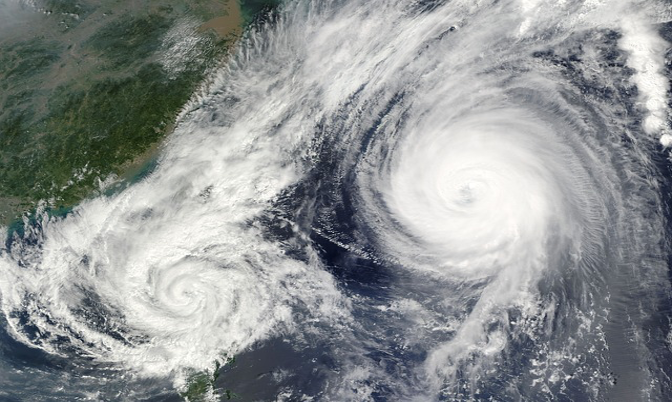By Amisha Patel, Staff Writer
The aftermath of Hurricanes Helene and Milton has left a monumental trail of devastation. States that typically do not experience hurricanes, like those in the Appalachian region, are left with destruction for which they lack both the resources and infrastructure to effectively respond.[1] As citizens face the heartbreaking loss of their belongings and livelihoods, FEMA (the Federal Emergency Management Agency) stands ready to provide crucial assistance to help mitigate these losses. However, during this critical time, the agency has faced criticism rooted in misconceptions about its role and capabilities.[2]
FEMA is funded by Congress through an annual appropriations process. This year, after the stopgap funding measure passed on September 25, FEMA now has about $20 billion available, plus a little extra from last year according to Congress.[3] FEMA’s work is guided by two types of laws: authorization legislation, which sets priorities and defines the types of help available, and appropriation laws, which provide the necessary funding for these efforts.[4] The federal government helps households and state, local, and tribal governments recover from disasters by providing financial aid through the Disaster Relief Fund (DRF), which is the main source of assistance after such events.[5] FEMA manages this fund under the Robert T. Stafford Disaster Relief and Emergency Assistance Act. The money is used for various needs, such as repairing and strengthening damaged infrastructure, clearing debris, and providing essential services.[6] It also helps cover home repair costs and property replacements for affected families, as well as funding projects to lessen the impact of future disasters.[7]
Misinformation and lies about FEMA’s disaster funding can cause more harm and distrust in the federal government.[8] The first myth regarding FEMA that has made its way around the internet during these two hurricanes is that FEMA does not have enough money.[9] FEMA gave out $750 per household to those affected by Hurricane Helene for immediate aid for essential supplies.[10] Soon after the provision of these emergency funds, many people took to social media such as X and TikTok to spread rumor that this money was a loan, and that it was the only amount that hurricane victims could recover.[11] The $750 is a” serious needs assistance fund” to survivors that apply withing the first 30 days after a disaster declaration, and it is a grant rather than a loan, so it does not have to be paid back to the government by its recipients.[12] The fund is intended to cover costs related to such as food, water, first aid, and shelter. [13] Further, the fund is only an initial payment, so survivor’s applications are still reviewed for further assistance with temporary housing, personal property, and home repair even after they receive initial emergency funds.[14] This misinformation turned survivors away from seeking aid from FEMA when they need it the most.
Survivors may also turn away from applying for disaster relief aid due to another widespread myth about FEMA, which is that those who apply for this assistance could have their property or land confiscated by FEMA.[15] This rumor also spread like wildfire on social media as people posted that if you don’t pay FEMA back, they will take your land. [16] FEMA aid comes in the form of a grant which does not have to be paid back.[17] There is one exception to this general rule for disaster relief aid recipients who applied for assistance while waiting for insurance to cover disaster-related costs. If they receive an insurance settlement, then FEMA has to be paid back once that insurance settlement arrives. Accurate information is essential for recovery, and it is important that communities come together to combat misinformation during these challenging times.
[1] https://www.cnn.com/2024/10/01/weather/hurricane-helene-path-of-destruction-climate-dg/index.html.
[2] https://www.fema.gov/about/how-fema-works.
[3] https://www.knoxnews.com/story/news/local/2024/10/09/how-does-fema-get-funded-will-it-run-out-during-hurricane-milton/75561331007/.
[4] https://www.cbo.gov/publication/58840.
[5] Id.
[6] Id.
[7] Id.
[8] https://www.usatoday.com/story/news/factcheck/2024/10/09/hurricane-helene-fema-funding-response-fact-check/75587360007/.
[9] https://www.fema.gov/fact-sheet/myth-or-fact-misinformation-about-fema-disaster-assistance-can-hinderrecovery#:~:text=Myth%3A%20FEMA%20assistance%20is%20only,food%20stamps%20or%20Medicaid%20reimbursements.
[10] https://www.fema.gov/node/rumor-one-person-per-household.
[11] https://www.npr.org/2024/10/09/nx-s1-5146475/milton-helene-fema-rumors-conspiracy-theories.
[12] Id.
[13] https://www.cnn.com/2024/10/09/politics/fema-750-hurricane-disaster-payment-assistance-what-to-know/index.html
[14] https://www.aljazeera.com/news/2024/10/8/fact-check-in-the-us-is-femas-750-disaster-relief-a-loan
[15] https://www.fema.gov/fact-sheet/myth-or-fact-misinformation-about-fema-disaster-assistance-can-hinderrecovery#:~:text=Myth%3A%20FEMA%20assistance%20is%20only,food%20stamps%20or%20Medicaid%20reimbursements.
[16] https://www.usatoday.com/story/news/factcheck/2024/10/08/fema-cant-take-hurricane-victims-land-fact-check/75559628007/.
[17] https://www.fema.gov/node/fema-only-provides-loans-disastersurvivors#:~:text=There%20are%20some,your%20insurance%20settlement.
